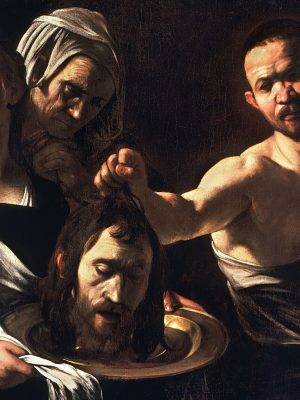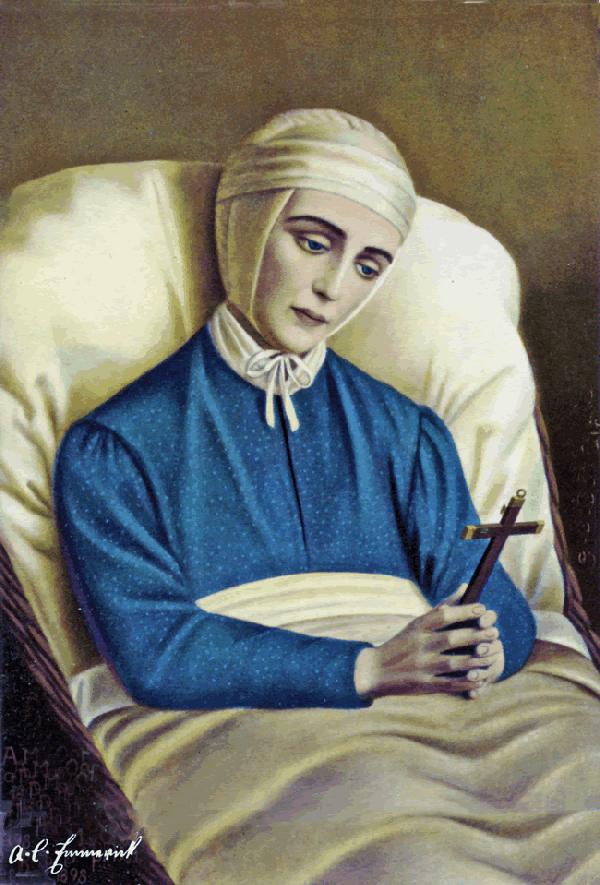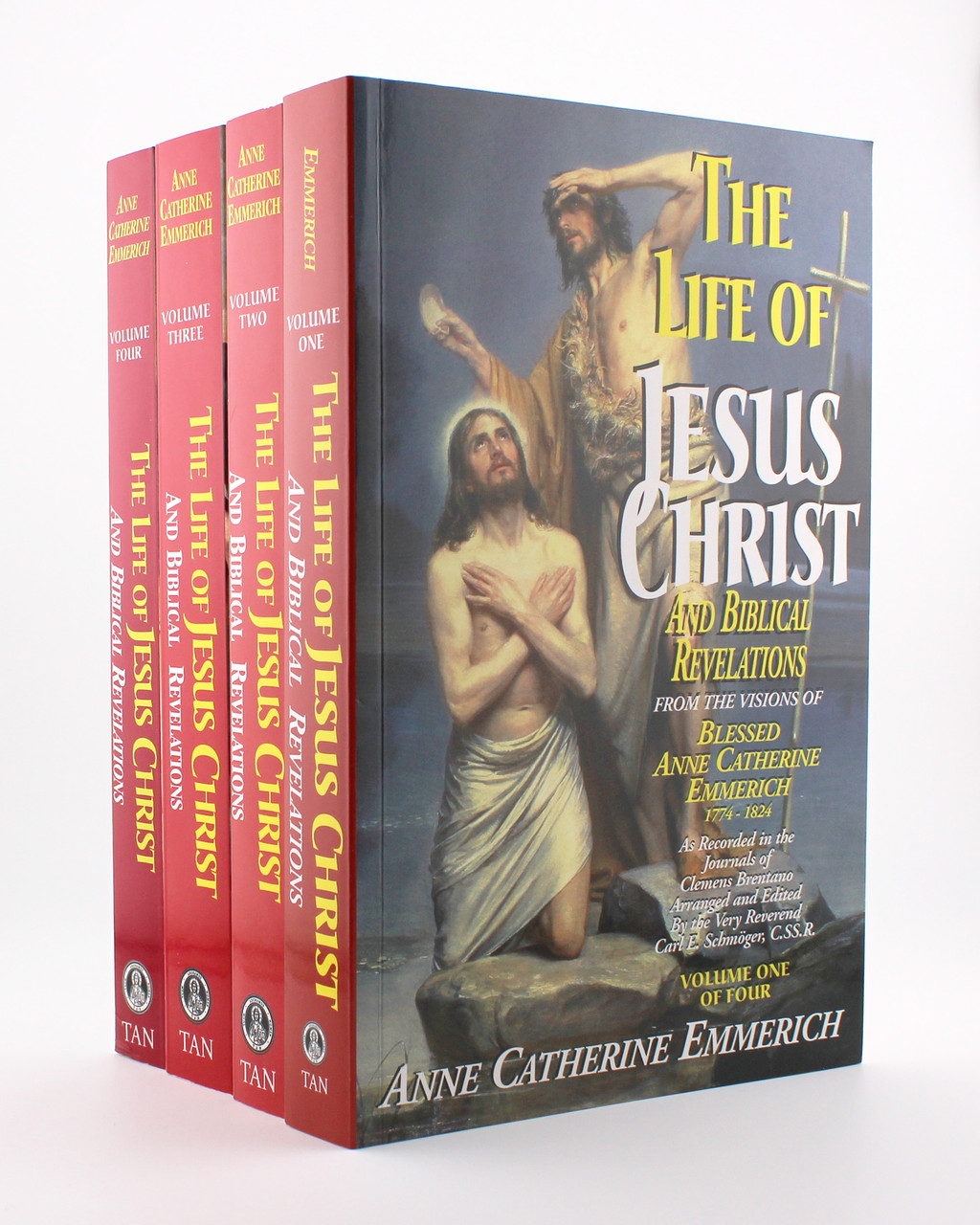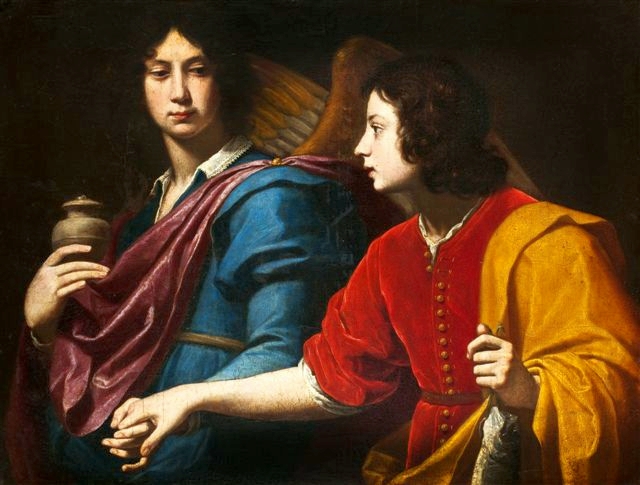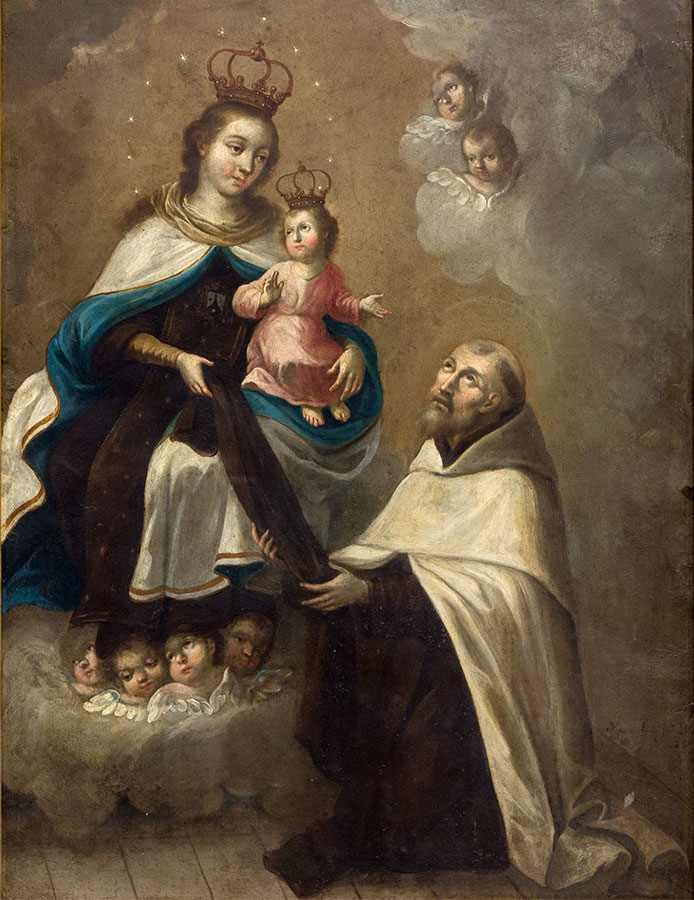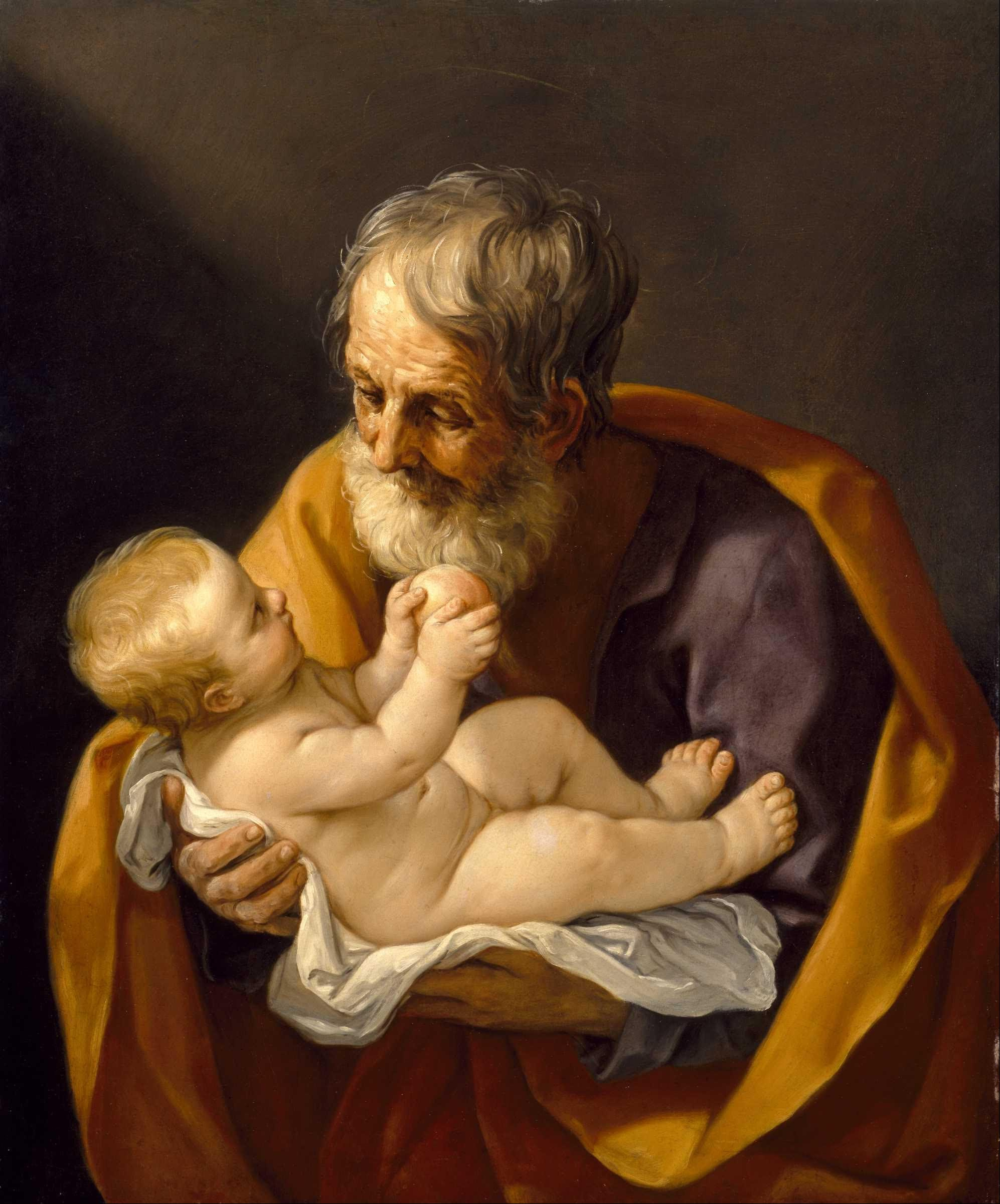Discover the vivid visions of Blessed Anne Catherine Emmerich as you’re transported to the scene of Herod’s banquet, the site of John the Baptist’s cruel martyrdom. Read on for a faithful account of the beheading of John.
Herod’s Banquet
For the last two weeks Herod’s guests had been pouring into Machaerus, most of them from Tiberias. It was one succession of holidays and banqueting. Near the castle was an open circular building with many seats. In it gladiators struggled with wild animals for the amusement of Herod’s guests, and dancers male and female performed all kinds of voluptuous dances. I saw Salome, the daughter of Herodias, practicing them before metallic mirrors in presence of her mother.
For some time past, John had been allowed to go around at large within the castle precincts, and his disciples also could go and come as they pleased. Once or twice he gave a public discourse at which Herod himself was present. His release had been promised him if he would approve Herod’s marriage, or, at least, never again inveigh against it. But John had always most forcibly denounced it.
Herod, nevertheless, was thinking of setting him free on his own birthday, but his wife was secretly nourishing very different thoughts.. Herod would have wished John to circulate freely during the festival, that the guests might see and admire the leniency of the prisoner’s treatment. But scarcely had the games and banqueting begun, scarcely had vice commenced to run riot in Machaerus, when John shut himself up in his prison cell and bade his disciples retire from the city. They obeyed and withdrew to the region of Hebron, where already many were assembled.
Herodias and Salome
The daughter of Herodias had been trained entirely by her mother, whose constant companion she had been from her earliest years. She was in the bloom of girlhood, her deportment bold, her attire shameless. For a long time Herod had looked upon her with lustful eyes. This the mother regarded with complacency, and laid her plans accordingly.
Herodias herself had a very striking, very bold appearance, and she employed all her skill, made use of every means, to set off her charms. She was no longer young, and there was something sharp, cunning, and diabolical in her countenance that bad men love to see. In me, however, she excited disgust and aversion as would the beauty of a serpent. I can find no better comparison than this, that she reminded me of the old pagan goddesses.
Herodias and her female companions, arrayed in magnificence, stood in the high gallery of her apartments, gazing upon Herod’s triumphal entrance into the banqueting hall. He came attended by his guests, all arrayed in pomp and splendor. The courtyard through which he passed to the triumphal arch was carpeted and lined with choirs of singers, who saluted him with songs of joy. Around the arch were ranged boys and girls waving garlands of flowers and playing upon all kinds of musical instruments.
When Herod mounted the steps to the arch of triumph, he was met by a band of dancing boys and girls, Salome in their midst. She presented him with a crown which rested on a cushion covered with sparkling ornamentation and carried by some of the children of her suite under a transparent veil. These children were clothed in thin, tightly fitting garments, and on their shoulders were imitations of wings.
Salome’s Dance
Salome danced for a while before Herod who, quite dazzled and enchanted, gave expression to his admiration, in which all his guests enthusiastically joined. She should, he said to her, renew this pleasure for him on the next morning. And now the procession entered the hall, and the banquet began. The women ate in the wing of the castle with Herodias.
Meantime I saw John in his prison cell kneeling in prayer, his arms outstretched, his eyes raised to Heaven. The whole place around him was shining with light, but it was a very different light from that which glared in Herod’s hall. The latter, compared with the former, appeared like a flame from Hell. The whole city of Machaerus was illuminated by torches and, as if on fire, it cast a reflection far into the surrounding mountains.
When all had eaten and wine had flowed freely, the guests requested Herod to allow Salome to dance again, and for this purpose, they cleared sufficient space and ranged around the walls. Herod was seated on his throne surrounded by some of his most intimate associates, who were Herodians. Salome appeared with some of her dancing companions clothed in a light, transparent robe.
The dance consisted of a constant bowing, a gentle swaying and turning. The whole person seemed to be destitute of bones. The whole performance gave expression to the most shameful passions, and in it Salome excelled all her companions. I saw the devil at her side as if bending and twisting all her limbs in order to produce that abominable effect. Herod was perfectly ravished, perfectly entranced by the changing attitudes.
When at the end of one of the figures Salome presented herself before the throne, the other dancers continued to engage the attention of the guests, so that only those in the immediate vicinity heard Herod saying to her: “Ask of me what thou wilt, and I will give it to thee. Yes, I swear to thee, though thou askest the half of my kingdom, yet will I give it to thee!”
Salome left the hall, hurried to that of the women, and conferred with her mother. The latter directed her to ask for the head of John on a dish.
Salome hastened back to Herod, and said: “I will that thou give to me at once the head of John on a dish!”
Only a few of Herod’s most confidential associates who were nearest the throne heard the request. Herod looked like one struck with apoplexy, but Salome reminded him of his oath. Then he commanded one of the Herodians to call his executioner, to whom he gave the command to behead John and give the head on a dish to Salome. The executioner withdrew, and in a few moments Salome followed him.
The Beheading of John the Baptist
Herod, as if suddenly in disposed, soon left the hall with his companions. He was very sad. I heard his followers saying to him that he was not bound to grant such a request; nevertheless they promised the greatest secrecy, in order not to interrupt the festivities. Herod, exceedingly troubled, paced like one demented the most remote apartments of his palace, but the feast went on undisturbed.
John was in prayer. The executioner and his servant took the two soldiers on guard at the entrance of John’s prison in with them. The guards bore torches, but I saw the space around John so brilliantly illuminated that their flame became dull like a light in the daytime. Salome waited in the entrance hall of the vast and intricate dungeon house. With her was a maidservant who gave the executioner a dish wrapped in a red cloth.
The latter addressed John: “Herod the King sends me to bring thy head on the dish to his daughter Salome.” John allowed him little time to explain.
He remained kneeling, and bowing his head toward him, he said: “I know why thou hast come. Thou art my guest, one for whom I have long waited. Didst thou know what thou art about to do, thou wouldst not do it. I am ready.” Then he turned his head away and continued his prayer before the stone in front of which he always prayed kneeling.
The executioner beheaded him with a machine which I can compare to nothing but a fox trap. An iron ring was laid on his shoulders. This ring was provided with two sharp blades, which, being closed around the throat with a sudden pressure given by the executioner, in the twinkling of an eye severed the head from the trunk.
John still remained in a kneeling posture. The head bounded to the earth, and a triple stream of blood springing up from the body sprinkled both the head and body of the saint, as if baptizing him in his own blood.
The executioner’s servant raised the head by the hair, insulted it, and laid it on the dish which his master held. The latter presented it to the expectant Salome. She received it joyfully, yet not without secret horror and that effeminate loathing which those given to sin always have for blood and wounds.
The Aftermath
Salome carried the holy head covered by a red cloth on the dish. The maid went before, bearing a torch to light the way through the subterranean passages. Salome held the dish timidly at arm’s length before her, her head still laden with its ornaments turned away in disgust. Thus she traversed the solitary passages that led up to a kind of vaulted kitchen under the castle of Herodias.
Here she was met by her mother, who raised the cover from the holy head, which she loaded with insult and abuse. Then taking a sharp skewer from a certain part of the wall where many such instruments were sticking, with it she pierced the tongue, the cheeks, and the eyes.
After that, looking more like a demon than a human being, she hurled it from her and kicked it with her foot through a round opening down into a pit into which the offal and refuse of the kitchen were swept. Then did that infamous woman together with her daughter return to the noise and wicked revelry of the feast, as if nothing had happened.
I saw the holy body of the saint, covered with the skin that he usually wore, laid by the two soldiers upon his stone couch. The men were very much touched by what they had just witnessed. They were afterward discharged from duty and imprisoned that they might not disclose what they knew of John’s murder. All that had any share in it were bound to the most rigorous secrecy.
The guests, however, gave John no thought. Thus his death remained a long time concealed. The report was even spread that he had been set at liberty. The festivities went on. As soon as Herod ceased to take part in them, Herodias began to entertain.
Five of those that knew of John’s death were shut up in dungeons. They were the two guards, the executioner and his servant, and Salome’s maid who had shown some compassion for the saint. Other guards were placed at the prison door, and they in turn were at regular intervals replaced by others. One of Herod’s confidential followers regularly carried food to John’s cell, consequently no one had any misgiving of what had taken place.
ooo
This article is taken from a chapter in The Life of Jesus Christ and Biblical Revelations Vol 3 by Blessed Anne Catherine Emmerich which is available from TAN Books.


